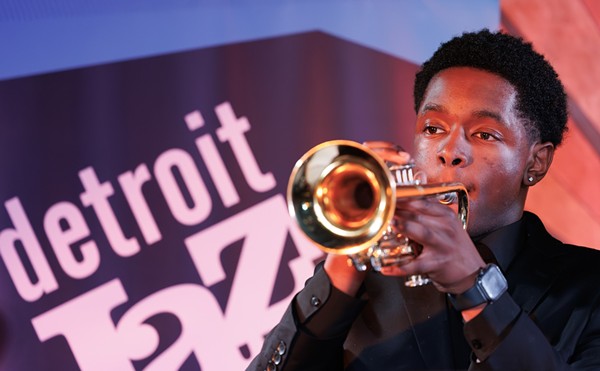Many people aren’t aware that Sonic Youth drummer Steve Shelley is from Michigan and he started his career with local hardcore band the Crucifucks. He has been with the Sonic Youth since 1985, but that hasn’t stopped him working with other people as well. I interviewed Shelley for UK drum magazine Rhythm in April 2009 and asked him to detail some of the highlights of his career. This is what he said
The Crucifucks – The Crucifucks (Alternative Tentacles, 1985)
While still living in Michigan, Shelley played drums for these hardcore punk semi-legends and put two albums out on Jello Biafra’s Alternative Tentacles label. The debut is a gloriously under-produced slab of uber-offensive noise.
SS: “I remember recording that album quite well. We were on tour and we went out and recorded with (producer) Spot in Los Angeles. We recorded it one night and mixed it another night 2 days later. It was done really quickly. I used my first real drum set. It was a Pearl, I remember that. It was wood drums with chrome mount side and a white fiberglass lining inside the wood. They were heavy drums. I’m not sure if they were the greatest drums, but I still have them. I haven’t used them in quite a few years. The bands and the drummers that I admired at that time would have been Gang Of Four and Killing Joke – a lot of post punk from England. A lot of stuff that was heavy on the toms. I haven’t heard that record in a long time. Musician friends will bring up that album now and again.”
Sonic Youth – Daydream Nation (Enigma, 1988)
Sonic Youth’s final indie full length release before they signed to Geffen Records, Daydream Nation is an undeniable bona-fide classic. The fact that, 20 years later, they would play the album in it’s entirety as part of the Don’t Look Back series of shows attests to its popularity.
SS: “It was recorded at a studio called Green Street Recording. We were really well rehearsed. At a certain point it was obvious that it was going to be a double album. That was a really big step in a way because up until that point, we associated double albums with overblown rock bands like Pink Floyd and Led Zeppelin. We were approached to do the Don’t Look Back Series last year. That was a lot of fun. When we released Daydream Nation, we never went out and played it in it’s entirety but that’s something that I really enjoyed doing. I think I was still using the Pearl kit while recording this record. I think it’s still a great album. People enjoy it a lot. Once we release a record, it sort of has its own life. I don’t have much to do with it anymore so I can’t claim too much credit for its success.”
Maureen Tucker – Life In Exile After Abdication (50 Skidillion Watts, 1989)
A meeting of 2 lo-fi, drumming minds. The former Velvet Underground drummer pulled in an impressive plethora of musicians for this solo album though, as Shelley goes on to explain, the whole process was a bit of a mess.
SS: “That was a ramshackle experience, which was a shame because it could have been so good. All of Sonic Youth were supposed to show up to play on this one song, but Daniel Johnston (singer / songwriter / artist) was staying at my apartment and he was acting up that day. I had to babysit him. I had to actually keep him away from the studio because he was being such a pain. I was invited to one session and I played a little bit but it was a bit of a disappointment. I was looking forward to the sessions though, and I got along with Mo greatly. She’s a really nice person and of course one of our heroes. Everyone in Sonic Youth is a big Velvet Underground fan. It was an honor to play with her, despite everything else.”
Sonic Youth – Goo (Geffen, 1990)
The album that saw Sonic Youth enter the big leagues. Back in 1990, Nirvana were yet to explode and hair metal bands like Motley Crue and Guns N’ Roses were enormous. Goo might not have had as much of an impact as it’s follow up, Dirty, but it was one of the albums that saw rock ‘n’ rollers worldwide stylistically shift.
SS: “That was our first record for Geffen so we had a bit more of a budget with that one. We tried different things in the studio. For a long time I didn’t listen to Goo – I distanced myself from it. I’m not sure why, I guess I just had no desire to listen to it. But recently we got to go back and revisit it for a reissue and I think it holds up really well. We remastered it and added extra tracks. I enjoyed it after being away from it for a while. It was like finding an old friend again. I remember during the recording that we just wanted to get a supremely rocking sound on that record, and it’s a hard sound to get. We wanted to capture on record what we think we give off at our live shows – the energy.”
Velvet Goldmine official soundtrack (Fontana London, 1998)
Telling the semi-fictional story of a glam rockers infatuation with a wild punk (Bowie and Iggy anyone?), Velvet Goldmine was critically panned but has gone on to become a cult classic. Director Todd Haynes needed a Stooges-esque soundtrack, so he pulled in Stooge Ron Asheton, plus members of Sonic Youth, Minutemen and Mudhoney. The band would play under the name Wylde Ratttz.
SS: “That was a lot of fun. The Velvet Goldmine movie was directed by Todd Haynes and he had worked with a lot of us before. He needed a Stooges style band to go with the Iggy type character. They had Ron Asheton, Mike Watt, some of us and Mark Arm from Mudhoney amongst other singers. We recorded a lot of original material and a lot of it has never seen the light of day. It was great to be in the same room as Ron Asheton - to hear him playing and hear that guitar sound that we’ve loved for so many years. Once Ron and Mike were playing with the Stooges, we didn’t want to cause any drama by pushing to get that stuff released. Maybe someday it’ll come out. I used a Brady kit on that album.”
Sonic Youth – The Eternal (Matador, 2009)
The Youth’s new album sees them return to an indie label (Matador), though Shelley claims that their vision was never compromised at Geffen anyway. Still, the album does seem to see the band invigorated and sounding fresher than they have in years.
SS: “Geffen never entered the studio, we just made our records. We’re all grateful to be working with Matador though, in a smaller environment. They understand us and they’ll be able to work with us well. We had a nice relationship with Geffen at the beginning but things changed over the years. With Matador, we’re making new friends and forging new relationships. We’re all really happy to be involved with them. The new album came together really quickly. We recorded it at our own studio in Hoboken, NJ, with John Agnello who we’re all friends with. He’s a wonderful guy to work with. We’re getting ready to play some of these songs live which is exciting to us. For the past few years I’ve been using a new Brady kit with really oversized toms. The floor toms, for example, are 16x16”.”
Follow @City_Slang




